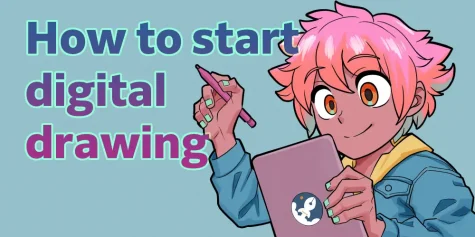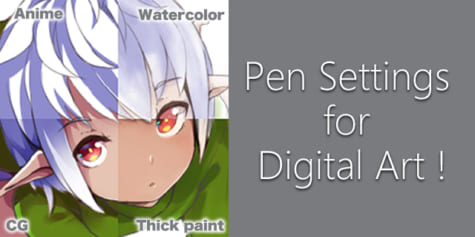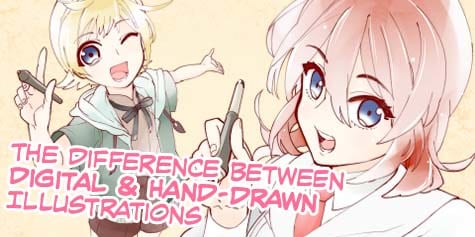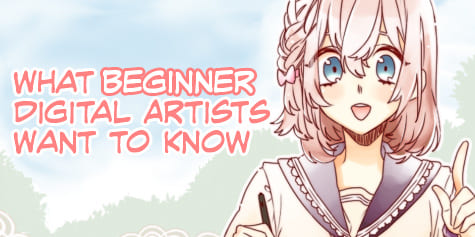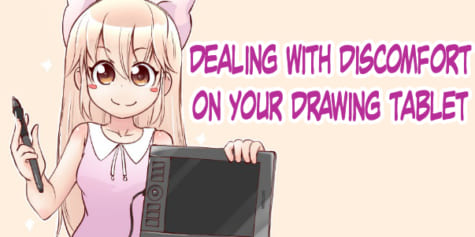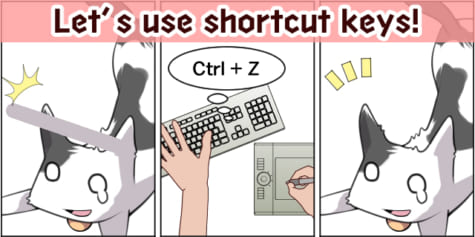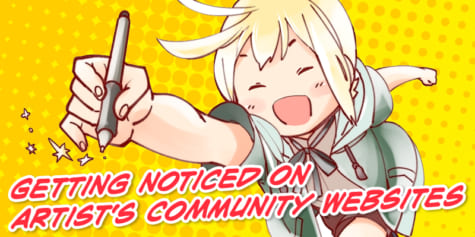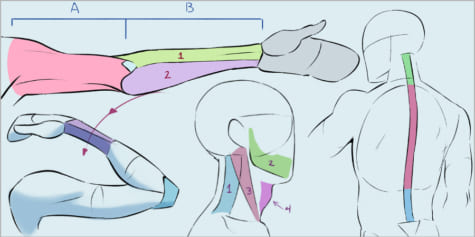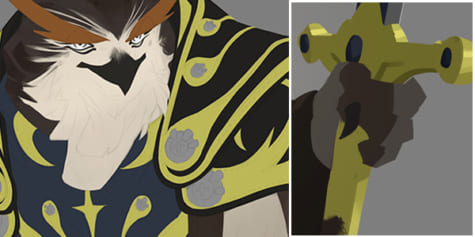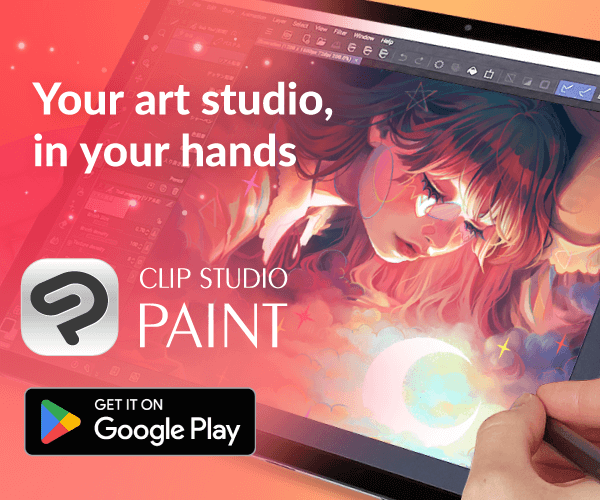Tips for Becoming a Professional Artist
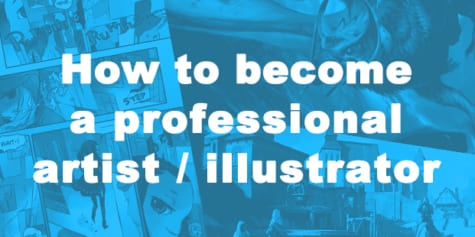
How do you become a professional artist, living from what you create? The first step is thinking about the type of work you want to create. This article offers advice for aspiring creators hoping to live off their art.
The first question to answer is whether you would like to lead your professional life as a freelance artist or an employee.
There are many ways to earn a living as an artist, with some types often being employed and others usually working totally independent. Here are some categories.

Advertising Artist
An advertising artist usually works for an advertising agency and is responsible for designing visuals for marketing campaigns. It’s a fairly structured job where creativity is channeled through existing workflows and management structures.
Animator/Multimedia Artist
Animators became famous in the previous century when the Disney and Hanna-Barbera studios started creating their animated TV and movie cartoons. In those days, they drew and painted every single frame of an animated scene on slides that were then scanned on film.
These days, animation software makes lives much easier and the careers no less exciting. There are more output channels than there used to be, including web animation and video games and therefore also more opportunities to find a job. You will often need a degree in computer animation, graphic design or fine arts.
Comic Artist/Cartoonist
Comic artists create stories for traditional print media or online webcomics. An example of a cartoonist is Kim Jung Gi, a South Korean artist born in 1975 in the town of Goyang-Si. At 19, this budding artist enrolled at a Fine Arts School, majoring in Art and Design.
Although this industry is dominated by major publishers like Marvel and DC, there are many free web hosting services for independent comic artists to grow a following and make a career from their art.
Architectural Designer
We all know what an architect does for a living, but an architectural designer’s job is less obvious. They create project layouts, plans, and drawings, often using CAD software. In most countries, you’ll still need a bachelor’s degree in architecture, civil engineering or drafting.

Layout Artist/Graphic Artist or Designer
Graphic artists/designers work in a variety of jobs. They can be employed by an advertising agency, but they can also be freelance designers working for multiple clients, e.g. Fortune 500 companies with large in-house marketing departments. Layout artists usually design the layout of brochures, annual reports, and books even and they too can be employed or freelancing.
Craft and Fine Artists/Painters
Craft and fine artists always work as freelancers to create original art. A good deal of successful artists are self-taught and have specialized in a specific type of art, such as sculpting, painting, drawing, etc. It used to be that painters, for example, worked for many years as an apprentice to a master (think Caravaggio, Rubens…).
When fine artists earn a degree, they have not only learned about the skill of painting or drawing but also art history, philosophy, etc. You can earn salaries between pennies and millions of dollars per year. However, you must take into account that you’ll need between 10 and 20 years to make a living from selling your art at major galleries.

Illustrator
Many illustrators work as freelancers. You’ll be illustrating books, magazines, greeting cards, etc. As with a fine artist, there’s no formal degree required but many professional illustrators hold at least a bachelor’s degree in illustration or fine art.
Heikala, for example, is an illustrator based in Finland. She works mainly with inks and watercolors. She sells products ranging from prints and books to apparel and accessories on her website.
Games and filmmaking
The digital and filmmaking production sector is another industry where artists are employed. With movies increasingly depending on VFX (Visual Special Effects) and the gaming and filmmaking industries converging, game designers and concept artists are destined to make a decent living out of their passion for creating close-to-life characters and scenes, but you should first decide if you want to be in pre-production or post-production.
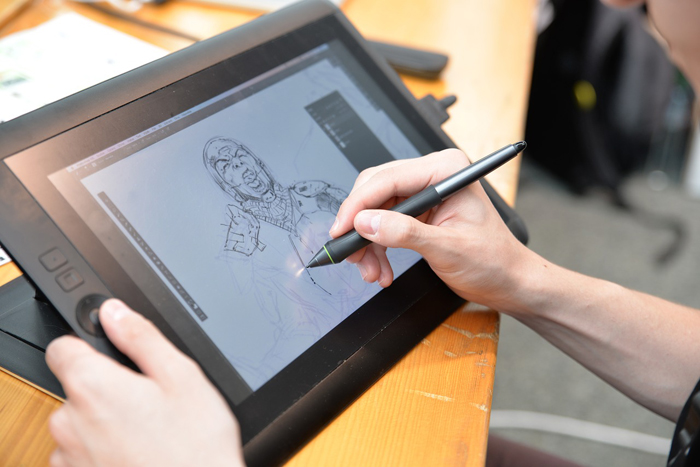
Fashion designer
The fashion industry has many types of jobs for creatives and the artistically inclined. In large companies, you’ll usually start as an assistant designer, with a potential to grow to a position of chief designer or director (Karl Lagerfeld, anyone?). Other jobs in this industry include fashion illustrator, sketcher and pattern grader. Some art schools offer a master’s degree in fashion, which can lead to eventually running your own fashion house.
Refining your skills
For fine artists, an art residency may be a good way to refine their skills. An art residency may offer time to devote to furthering your practice in a quiet and focused environment or help with promoting your art.
Fashion designers and illustrators may opt for one of the world’s international internships. Several of the leading companies like the Intern Group and Global Experiences have offers across the globe and programs for candidates at all stages of their academic or professional career. They state they’ll pair you up with an organization that matches your profile, find your accommodation and provide 24/7 support throughout your program.
Career fields include fashion design, art, publishing and media, TV and film, fine art, graphic design, magazine layout and more. Note, though, that an internship can be expensive—you’ll be paying a fee to work for free and employment isn’t guaranteed at the end of it. Still, a lot of people feel like they came out better.
Internships also exist for game designers/concept artists. Epic Games, for example, provides internships on a regular basis.
Challenges before your art generates a decent income
The first challenge is to develop a business strategy. Most strategies are based on a three-step workflow: first identify a market that is not saturated, develop a product to serve that market and make that product available and make the market want that product.
For example, a niche for a concept artist could be VR (Virtual Reality—the niche embraced by Liz Edwards), the product being the superior ability to adapt to historical storylines, and the market placement being the design of keyframes that show a distinct influence of historical references.
For an illustrator like Kate Rowland, the niche was an easily recognizable design that initially was based on a TV show, the product was custom-designed jewelry, and the market placement was a self-owned website and an Etsy shop.
Even then, the economic outlook and the law of supply and demand will determine if you will find a job or gig quickly and easily.
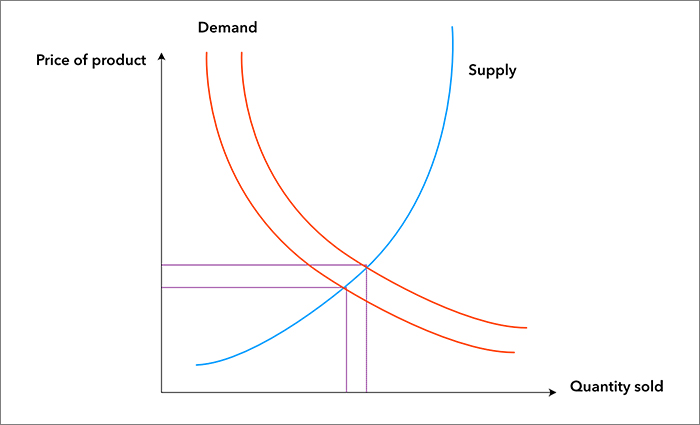
Price increases when demand grows and supply remains the same.
It is even harder if you’re a fine artist, although it helps if you are promoted by your art school or are “discovered” by an important collector of fine art.
The reason is that freelance careers are financially unstable, with low earnings—if at all—for extended periods, no or little job security, little chance of putting aside a bit of money every month to enjoy a pension, etc.
For example, many freelance graphic designers complain about companies commissioning work in return for nothing but earning a reputation and “exposure.” In the advertising industry, it’s not uncommon to have businesses agree upon a project fee but keep asking any number of “quick edits” without paying more for the extra work. Having your Terms and Conditions drafted by a lawyer or working through an agent, therefore, is a necessity.
Artists who don’t have a financial backup from rich parents or benefactors need to work in a day job to survive. In the era of social media, though, artists do have an extra source they can tap into: the larger online public.
Launching your business
Websites such as Patreon offer a way to invite people you’ve never met in the flesh to sponsor you with a small amount of money on a subscription basis. Platforms like Etsy and Behance support selling your art online directly to interested buyers.
There are lots of online fine art galleries too—some of which will first critique your work. They will sell your artwork the way a real-world gallery would work.
Singulart, Artpal, Displate (this website sells art that is printed on metal plates), Artfinder, Azucar (only curated art), Saatchi, Society6 and Kyte.li, Shairart (curated art only) and ArtPlease are among the most important ones.
Promoting your art business through social media
For any social media platform to work for you, you need people who are willing to spread your fame, such as family and friends who blow your horn and arouse further interest into what you’re creating via their connections with other people.
On LinkedIn®, you get several channels to connect with potential employers and clients.
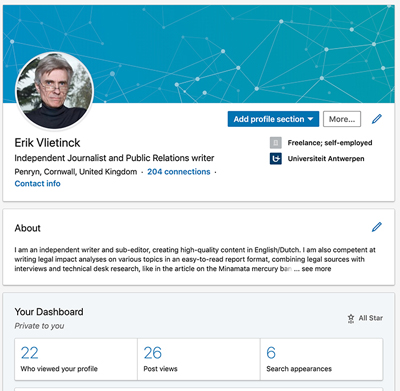
You first need to build credibility with endorsements, which offer an easy way to add third-party validation. Most people trust reviews and recommendations written by strangers online as much as they do a referral from a personal connection. However, that doesn’t necessarily mean that collecting endorsements and recommendations will make prospects willing to work with you. From my own experience, I’d say LinkedIn® isn’t going to be very helpful if you’re after anything else but a position in a company as an employee.
If you don’t mind Facebook using your personal data and information for its marketing purposes and you having to surrender your intellectual property rights on any content you post to that company, the platform can help you on your way to becoming successful. Facebook even has its own marketplace these days, so you could even try selling art through that channel.
Probably all types of digital artists and freelance illustrators will find Twitter, Instagram and other social media good for building a fanbase. Converting your fanbase into a source of income requires yet more “business” work, for example sending a newsletter regularly with MailChimp (any service that allows you to track results, really), continuously updating your mailing list, sending direct messages to your most engaged fans on Twitter, regularly inviting fans to workshops, etc., etc.
For concept and 3D artists, ArtStation offers a marketplace, jobs board, and portfolio features.
Often overlooked ways to market your art business
Another platform that can put you in the picture is YouTube. Creating a video of you painting/drawing and explaining how to achieve certain results—teaching as it were—allows you to shine and show your skills and what you’re capable of producing. You do need to be a bit of a storyteller to be successful at it, though.
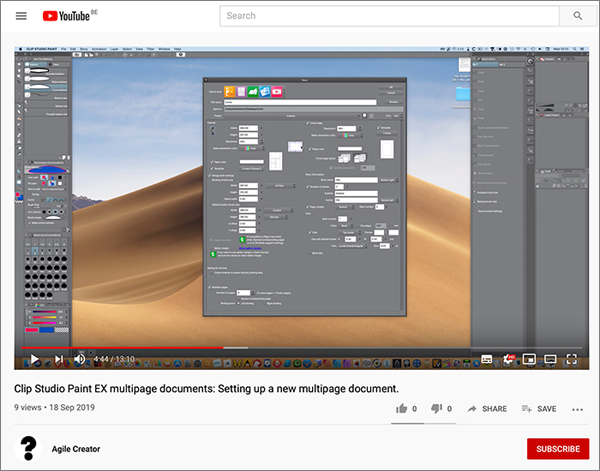
Some examples:
https://www.youtube.com/watch?v=HlcjTqxzWEk
https://www.youtube.com/user/ProkoTV/videos
https://www.youtube.com/channel/UCLEVrhumRsK67JkP3G4w5cQ
Other marketing channels include your social media profiles, portfolio, “Hire me” page, About page on your website and your email signature.
Also, it pays to use Quora (answering people’s questions lets you put a spotlight on your skills and knowledge much like giving a YouTube presentation).
And don’t forget to network so you can enjoy word-of-mouth advertising.
How it works out for most people
Some of you in fine arts may be dreaming about becoming as famous as contemporary painter Luc Tuymans (Tate Modern), or if you’re an illustrator, as important a graphic designer as Michael Bierut or Kate Moross. While Tuymans is one of the most influential painters working today, Bierut, who has won hundreds of design awards, has been a partner for 28 years at Pentagram, one of the most famous design agencies in the world. Kate Moross is an art director, illustrator and graphic designer whose work spans across artistic direction, moving imagery, typography and illustration (according to her biography). In 2012, Moross founded Studio Moross, a London-based multidisciplinary design company that—at the time of writing—was sharing their recent work for the Spice Girls Spice World Tour 2019.
Moross has won several awards, as has Bierut, who graduated summa cum laude from the University of Cincinnati’s College of Design, Architecture, Art and Planning. Tuymans’ trajectory starts with art schools in Belgium and the Netherlands, a college degree in art history and more.
That, however, is not as it turns out for everyone. People like Bierut, Tuymans and Moross may serve as the standard-bearers for those who start with art school, it’s no good to feel depressed if you find yourself—many years after leaving school—still struggling to pay for the bills. That doesn’t mean your artwork is worthless.
Rubens may have been wealthy, but he was not just a painter. Between 1627 and 1630, he had an active diplomatic career. Closer to our day and age, the perhaps most famous concept artist today, Feng Zhu, who started working on PC and PS1 games in the nineties, now runs his own concept art school in Singapore.
About Erik Vlietinck
Erik Vlietinck became an independent writer and sub-editor 30 years ago, creating high-quality content in English and Dutch. He is familiar with industrial printing, video, and audio production on the Mac platform, as well as graphics design, digital publishing, color management, and more. As a journalist/reviewer, Erik contributes to a number of US- and UK-based publications, while serving Fortune 500 companies and SMEs worldwide as a technical copywriter. He is a keen amateur of pencil drawing and painting with acrylic media and has had some of his artwork exhibited in his native city Antwerp.







